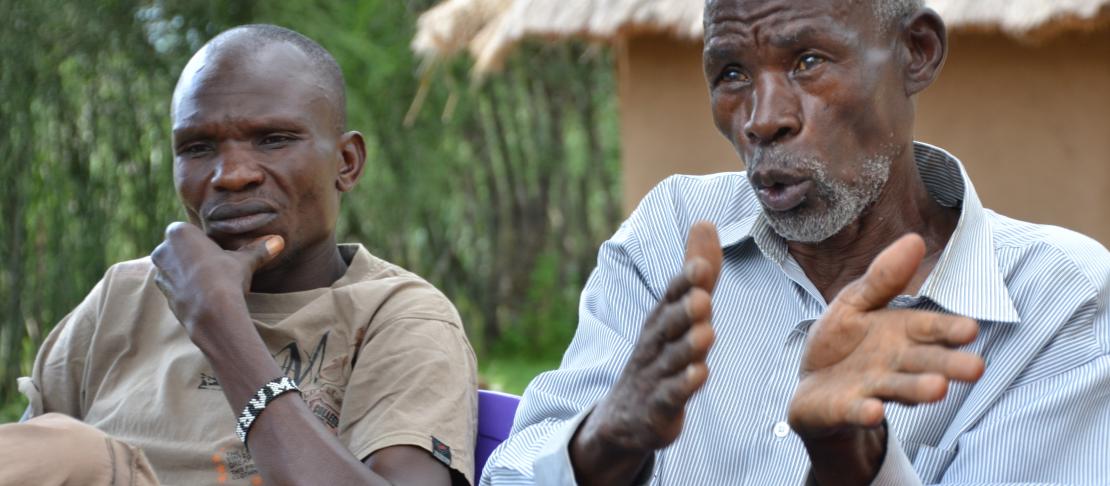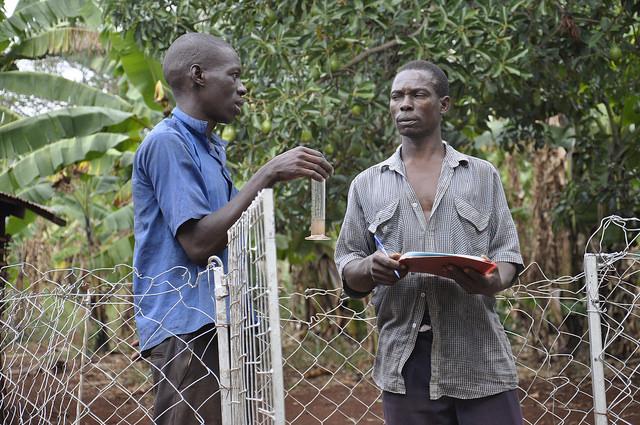Traditional forecasting meets science for climate risk management

Traditional forecasters meet with climate scientists. What follows is a healthy cross pollination of ideas enabling vulnerable communities to make better farming decisions.
Traditionally, farming communities across Africa have always used traditional knowledge to forecast the weather and plan accordingly for the season. This mainly happened within the private confines of families and their immediate neighbors. However, across several villages, nested deep in the Usambara Mountains, North East of Tanzania, small holder farmers are now benefitting from traditional weather forecasting information gathered by village based groups of experienced traditional weather forecasters.
Even more interesting, these committees of traditional weather forecasters (IK) drawn from several villages in Lushoto meet, after every 3 months, with a team of experts from Tanzania Meteorological Agency (TMA) where scientific forecasting is done to compare the data. This has led to a healthy cross pollination and gradual integration of indigenous knowledge and scientific weather and climate forecasting for risk management.
“When scientific and indigenous knowledge approaches are utilized, better results can be obtained for guiding local farmers in making critical farming decisions” said George Sayula, an agricultural officer with the Selian Agricultural Research Institute (SARI) in Arusha, Tanzania.
Working together to integrate traditional and scientific knowledge
This initiative is part of an ongoing project on promoting integration of indigenous knowledge and scientific weather and climate forecasting for risk management under a changing climate in Lushoto District, Tanga Region. Conceived jointly by Tanzania’s Sokoine University of Agriculture and the Tanzania Meteorological Agency, with support from the CGIAR Research Program on Climate Change, Agriculture and Food Security (CCAFS), this project has served to validate traditional knowledge systems particularly at a time when effort is being made to combat the effects of climate change on food security among the most vulnerable rural communities across the world.

The project has several goals, key of which include, supporting IK forecasts in Lushoto as well as the dissemination of and up scaling of weather forecast information to the wider community so that each farmer is empowered.
According to a Baseline Survey conducted in the area in 2011 by CCAFS and partners, 21 % and 24 % of households still relied on indigenous knowledge with respect to forecasts of extreme events and timing of the start of the rains respectively.
Access Summary of Baseline Household Survey Results: Lushoto
Alloyce Shangali and his team of six other traditional weather forecasters from Yamba Village say that their findings are based on keen and consistent observations of certain indicators. These include appearance of thrips (insects) on surrounding wetland areas to indicate a good rain season. Additionally, flowering of fruit trees such as peaches and plums is a sign of rainfall. Other indicators include animal behavior, appearance of the sun, moon and the direction of the wind among others. This practice is informed by a foundation of indigenous cultural knowledge that goes back many generations.
Teams of traditional weather forecasters in villages such as Mbuzii and Yamba meet twice a month to deliberate and set an agenda for their work. At each meeting they review the previous forecast and whether it came to pass or not. “We have a lot of confidence in what we do,” noted 66 years old, Alloyce Shangali, who is also spokesperson for the Yamba group of forecasters.
“Each time we forecast, there are differences with previous seasons,” explained Kariati Shambiru a member of the traditional forecasters group. These variations, as he further notes, indicate the uncertainty in future climatic conditions and the importance of working with climate scientists at TMA.
Under a new multiagency programme expected to run from 2014-2016, TMA will seek to improve the accuracy and range of its short-term weather and longer-term seasonal forecasts.
Read more about this project: Tanzania-Climate Services for Action
Dissemination of climate forecasts to communities
After the formal meetings with the TMA team in Lushoto, forecasts are integrated and packaged for dissemination to the wider community. Several dissemination tools are being used to reach out to the wider community in Lushoto. The most innovative of these tools is the FarmShort Messaging Service (SMS) tool designed for sending climate forecast information to farmers.
Through the FarmSMS service, subscribed farmers receive timely climate information including alerts and advisories, weather and climate forecasts that are issued by TMA to the farming community in the Swahili national language. In other cases, word of mouth or interpersonal information exchanges, posters as well as flyers are used to reach as many farmers as possible with the latest forecasts.
Read more on access to climate information: How can we help farmers better understand climate information?
Alloys Shangali says that the seasons have changed. The amount of rains that the Lushoto region used to receive has reduced, crop yields too have dwindled. The region’s population however continues to expand, forcing farmers to cultivate steep slopes which was not the case three or four decades back. All in all, the Yamba village committee of traditional weather forecasters agrees that these are danger signs. More than ever, the community requires our services to effectively adapt to these changing conditions, he concludes.
Additional reading
To find out more about CCAFS work on Climate Services for Farmers
Phillip Kimeli and Wilson Ugangu work for CCAFS. Phillip is a Research Assistant while Wilson is a Communications Consultant. George Sayula is the Lushoto site Team Leader and he works for the Selian Agricultural Research Institute (SARI).The blog was edited by Vivian Atakos, Communications Specialist for CCAFS East Africa.



